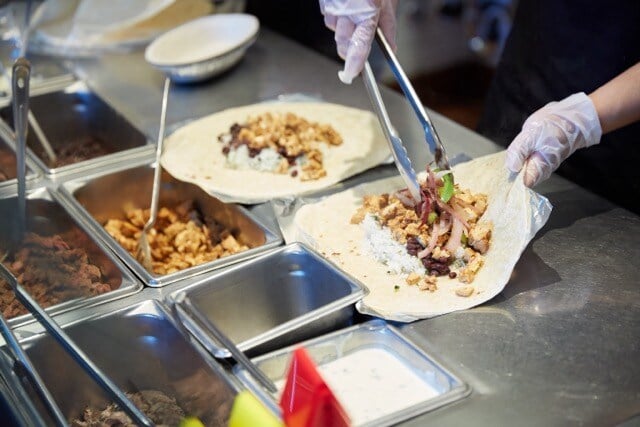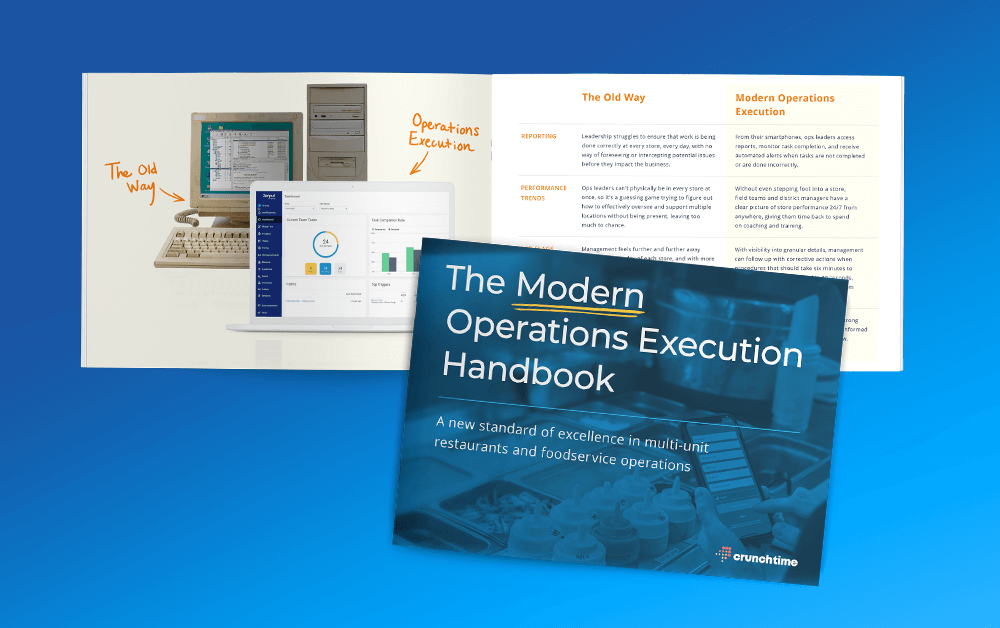
- Home
- Crunchtime Blog
- What Is Modern Operations Execution and How Has it Changed the Way Restaurant Teams Work?

What Is Modern Operations Execution and How Has it Changed the Way Restaurant Teams Work?
It’s time to take a good, hard look at how multi-location restaurants work today—the time lost, forgotten work, wasted materials, and missed communication—versus the potential of how it could be. Traditional tools and techniques, like laminated checklists, coffee-stained documents, and back-office binders, simply no longer cut it.
Speaking of which, does any of this sound familiar:
- Field managers driving back and forth to stores to identify and rectify issues
- Pencil-whipped checklists and hours spent on mundane tasks
- Missing documentation, lack of compliance, and make-shift processes
- Unseen emails (and faxes!?), and games of telephone between stores and HQ

For many years this was (and in many cases, still is) the reality in multi-unit operations, and many operators held the “if it ain’t broke, don’t fix it” mentality. With no visibility into the quality of work being done in stores and a lack of consistent communication, it’s almost hard to believe that this was standard for so long - and that it still is today for many operators.
One thing that hasn’t changed: consumers want food that tastes good and is safely prepared in a clean environment with quality service. Creating that consistent experience is the core of operations execution.
Operations execution refers to the work that is actually happening in stores, and how ops leaders make sure it’s done really well. While this includes task execution, it also encompasses other practices like optimizing how you communicate operational priorities, teaching employees to adhere to brand standards, and taking a look at how task execution is done (i.e. can it be more efficient or productive?)
The first big step on your journey toward modern operations execution is to understand what’s already happening today. Through technology, modern operations execution helps drive employee productivity in the field and in stores, and improves the consistency of work happening throughout the business. This is particularly difficult to achieve for multi-unit foodservice chains that operate across dozens, hundreds, or thousands of locations, especially as they open new stores and try to hire (and retain) more staff.
Manual systems and antiquated procedures will never be able to provide you with the visibility you need to gain critical insights and increase confidence, across locations. Having the processes and infrastructure needed to quickly roll out strategic initiatives can play a major role in scaling your business and running a more agile and successful operation. Modern-minded ops leaders look at every aspect of critical work that makes operations successful, like food quality, sanitization, audits, and more, and wonder how each one, big or small, can be done better or faster.
If your organization continues to struggle with the same old-school issues over, and over again, you risk continuing to fall further behind as competitors, and the broader industry, keep moving forward.
Let’s put it this way, while operators continue to do it how “it’s always been done” here’s what can happen:
- Competitors opened 10 new stores.
- Customers got tired of waiting.
- Staff didn’t show up and applied elsewhere.
To get to a better place with stronger operational outcomes, you have to be able to visualize what’s possible. The newly released Modern Operations Execution Handbook will help operations leaders understand what’s already happening today and how some of the top foodservice operators are leading the way. Download your free copy now.
Share this post
Related


How Whataburger Scaled Operations in Less Than 3 Months Across 800+ Restaurants with Zenput


